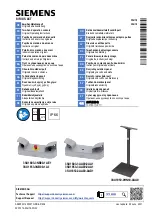
Manual Controls
Control
Function
This switches the filter mode from high-pass (top position)
to low-pass (bottom position).
This changes the type of resonance. In the top position,
you will get a clean resonance curve while in the bottom
position there will be added harmonics that heavily distort
the sound – a dirty type of resonance.
Note:
The
specific
result
may
be
different
in
case
components or cartridges are currently inserted into the
modifier ports (see below).
In case the resonance type switch is in the bottom position
(dirty
resonance), this switches between primarily high
additional harmonics (top position) as indicated by the
treble
clef
and
predominantly
low
additional
harmonics
(bottom position) as indicated by the bass clef.
Note:
The
specific
result
may
be
different
in
case
components or cartridges are currently inserted into the
modifier ports (see below).
RESO
This changes the filter’s resonance (Q factor). In the
fully
counterclockwise position, there is no resonance.
Around the 10 o’clock position, the filter will start to
self-resonate (depending on the other controls’ settings),
with the intensity increasing up to the fully clockwise
position.
FREQ
This determines the cutoff frequency for the filter. In the
fully counterclockwise position, the frequency is at its
minimum (high-pass filter fully open, low-pass filter fully
closed) and vice versa.
PRE
This changes the pre-filter drive intensity. In the fully
counterclockwise position, there is no additional drive.
While
rotating
the
knob
towards
the
fully
clockwise
position,
the
amplitude
of
the
signal
is
gradually
increased, with an emphasis on high frequencies. Due to the
Steiner-Parker filter's excellent response to being driven
in
this
way,
it
is
recommended
to
make
use
of
this
functionality as often as possible. :)
























